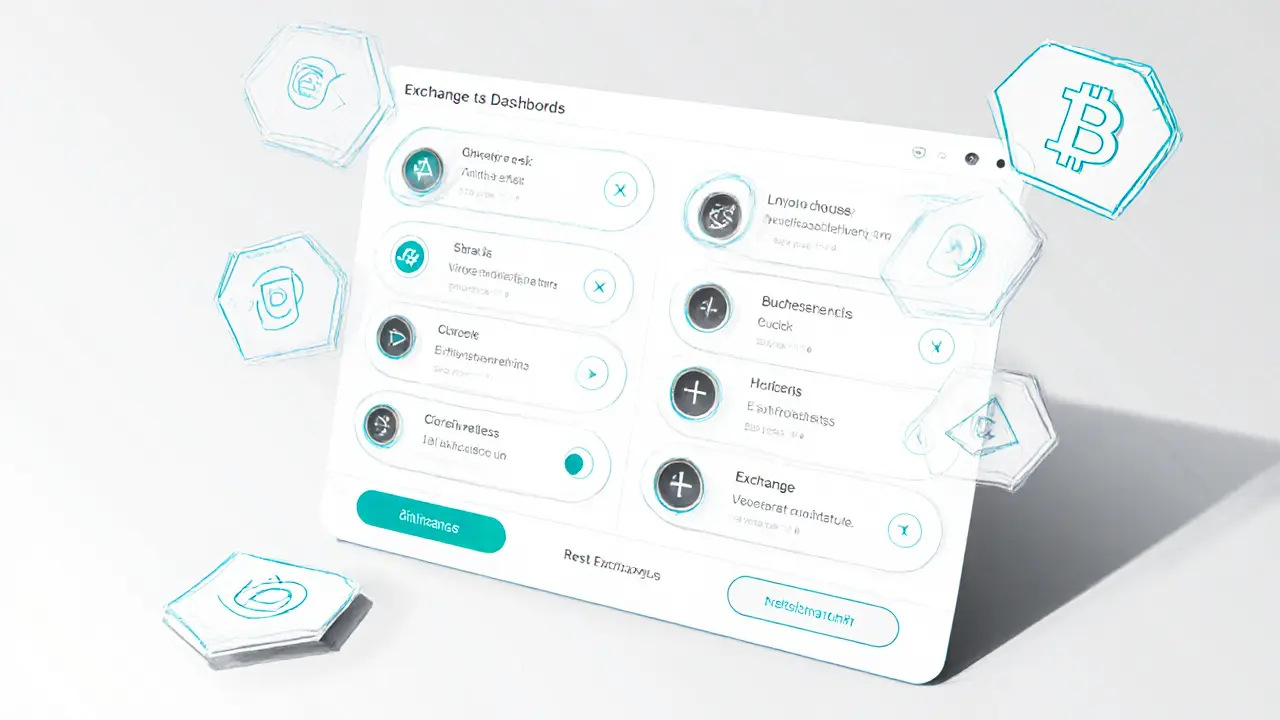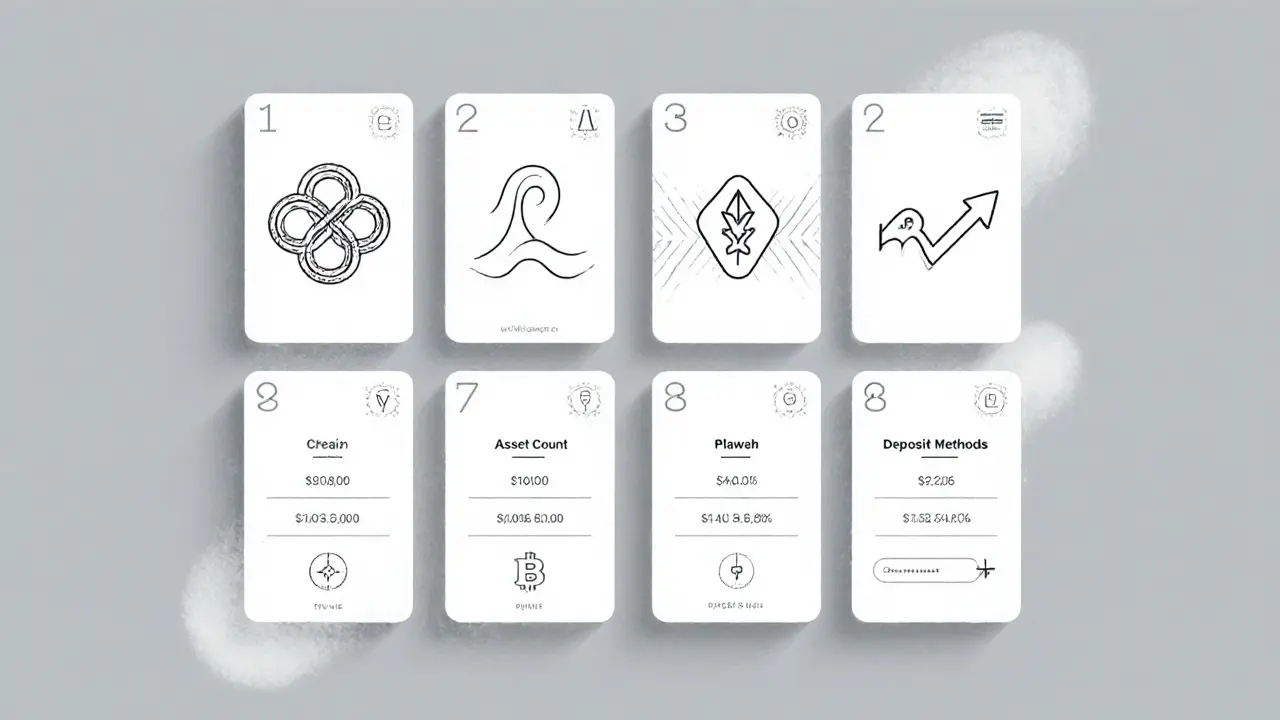Top Crypto Exchanges That Accept Russian Citizens (2025 Guide)

Russian Crypto Exchange Selector
Key Takeaways
- The six exchanges that currently accept RUB deposits are Bybit, Gate.io, KuCoin, MEXC, Bitget and Phemex.
- Bybit leads in overall fees and Russian‑language support, while Gate.io offers the widest asset list.
- The Experimental Legal Regime restricts access to "highly qualified" investors, but thresholds may be lowered later this year.
- Russia’s home‑grown stablecoin A7A5 provides a way to move rubles on‑chain without US‑based freezing risk.
- Always verify AML/KYC requirements and watch for sanctions updates before depositing.
Why Russian Citizens Still Need Crypto Exchanges
Even though the Central Bank of Russia (CBR) has tightened rules around digital assets, many Russians still turn to crypto to move money across borders, hedge inflation, or simply trade. The key obstacle is finding a platform that lets you fund your account with rubles (RUB) without running into sanctions blockers.
As of July2025, six international exchanges openly accept RUB deposits and provide Russian‑language interfaces. Those platforms have become the go‑to spots for traders, investors, and businesses that need a reliable bridge between the domestic banking system and the global crypto market.
Regulatory Landscape Shaping Exchange Access
The CBR introduced the "Experimental Legal Regime" (ELR) in March2025. Under ELR, only "highly qualified" investors can trade crypto on state‑approved venues. Qualification means either holding more than 100millionRUB in securities or earning over 50millionRUB in the prior year. While the Ministry of Finance is reviewing these thresholds, they remain a barrier for most retail users.
Outside the ELR, Russian citizens can still access foreign exchanges that accept RUB. However, these platforms are subject to U.S. and EU sanctions, so they must continuously adapt their onboarding and AML procedures. Failure to comply can lead to sudden account freezes, which is why understanding each exchange’s compliance posture is critical.
The Six Exchanges That Accept Russian Users
1. Bybit
Bybit is a global cryptocurrency exchange that offers Russian‑language support and accepts RUB deposits via bank transfers, credit/debit cards, Sberbank and Tinkoff. It charges a flat 0.1% spot‑trading fee, provides over 2,000 tradable assets, and adds futures, staking, crypto loans, and copy‑trading tools tailored for Russian traders.
Bybit’s interface is mobile‑first, and its customer‑service team operates 24/7 in Russian, making it the most user‑friendly option for newcomers.
2. Gate.io
Gate.io is an exchange known for the largest selection of cryptocurrencies - more than 3,600 tokens as of 2025. RUB deposits are accepted through bank wires and several e‑wallet partners. While its trading fees start at 0.2%, the sheer breadth of assets (including many DeFi projects) attracts traders who want niche exposure.
3. KuCoin
KuCoin focuses on altcoins and meme tokens, offering a vibrant community and a robust suite of staking and lending products. RUB can be funded via regional payment processors and crypto‑to‑crypto swaps. Fees are tiered; most users pay around 0.1% on spot trades.
4. MEXC
MEXC is an exchange that stands out for its exceptionally high staking rewards - some assets exceed 600% APY. It accepts RUB through partner banks and instant card top‑ups. The platform also offers futures and leveraged tokens, appealing to risk‑takers.
5. Bitget
Bitget has built a reputation around copy‑trading, allowing users to mirror the strategies of top traders. RUB deposits are supported via local bank transfers. Trading fees are competitive at 0.1% for makers and 0.2% for takers.
6. Phemex
Phemex is a derivatives‑focused exchange that also offers spot trading. It accepts RUB through a limited set of payment gateways and provides a simple UI for futures contracts. Its fee structure mirrors Bybit’s 0.075% maker / 0.025% taker rates for futures.

Comparing the Six Platforms
| Exchange | Spot Fee (Maker/Taker) | RUB Deposit Options | # of Assets | Special Strength |
|---|---|---|---|---|
| Bybit | 0.1% / 0.1% | Bank transfer, cards, Sberbank, Tinkoff | ~2,000 | Low fees, Russian support, futures & copy‑trading |
| Gate.io | 0.2% / 0.2% | Bank wire, e‑wallets | >3,600 | Broadest asset list |
| KuCoin | 0.1% / 0.1% | Regional processors, crypto‑swap | ~1,800 | Altcoin & meme focus, staking pool |
| MEXC | 0.2% / 0.2% | Bank partners, instant cards | ~1,600 | Very high staking yields |
| Bitget | 0.1% / 0.2% | Local bank transfers | ~1,500 | Copy‑trading ecosystem |
| Phemex | 0.075% / 0.025% (futures) | Limited gateways | ~1,300 | Derivatives specialization |
How to Choose the Right Exchange for You
- Trading style: If you want futures, Bybit or Phemex are best. For deep altcoin hunting, Gate.io and KuCoin shine.
- Fee sensitivity: Bybit and Bitget offer the lowest spot fees; MEXC compensates higher fees with massive staking rewards.
- Deposit convenience: Bybit supports the widest range of Russian banks, a big plus if you don’t want to use third‑party processors.
- Regulatory risk: Exchanges that rely on Western payment rails (e.g., some Gate.io routes) may face sudden freezes. Keep a small balance on high‑risk platforms.
- Community and support: Russian‑language chat groups and 24/7 help desks are available on Bybit and KuCoin, making problem resolution quicker.
Using the Ruble‑Backed Stablecoin A7A5
A7A5 is a ruble‑backed stablecoin that circulates on both the TRON and Ethereum blockchains. With more than 41billion tokens in supply and $68billion in lifetime transaction volume, it has become the preferred on‑chain vehicle for Russian businesses that need to move funds without exposing themselves to USDT freezing risk.
The stablecoin is backed 1:1 by ruble deposits held at Promsvyazbank (PSB) via the Kyrgyz firm Old Vector LLC. Because its backing stays within a non‑Western jurisdiction, sanctions agencies have so far been unable to seize A7A5 tokens.
Many of the six exchanges listed above now list A7A5 pairs (e.g., A7A5/USDT). Traders can use it to park rubles on‑chain overnight and then convert back to fiat when banks reopen or when they need to pay overseas suppliers.
However, remember that A7A5’s activity peaks Monday‑Friday and dries up on weekends - a pattern indicating business‑centric usage. If you’re a retail investor, treat it as a short‑term liquidity tool rather than a long‑term store of value.
Practical Tips and Common Pitfalls
- Start with a small test deposit. Even though the exchanges claim “instant” RUB credit, some banks still impose 1‑2day processing times.
- Enable two‑factor authentication (2FA) and, where possible, hardware‑based security keys. Russian accounts are frequent targets for phishing.
- Keep records of every deposit and withdrawal. The CBR can request proof of source of funds, and a clean audit trail saves time.
- Monitor sanctions news daily. A platform that’s open today could be blocked tomorrow if it appears on an OFAC list.
- If you need to move large sums (>1millionRUB), consider splitting the transfer across multiple exchanges to avoid triggering AML alerts.
Future Outlook: What Might Change in 2026?
The Ministry of Finance hinted at lowering the "highly qualified" thresholds later this year. If the limits drop, more Russian citizens could legally trade on domestic platforms, reducing the need for foreign exchanges.
On the international side, sanctions pressure remains high. Expect exchanges to tighten KYC, possibly requiring passport‑level verification even for small accounts. At the same time, new ruble‑backed tokens could emerge, competing with A7A5 and offering additional privacy features.
For now, the six exchanges listed above form the most reliable bridge between Russian rubles and the global crypto market. Stay informed, keep security first, and adjust as the regulatory landscape evolves.

Frequently Asked Questions
Can I use a Russian bank card on these exchanges?
Yes. Bybit, MEXC and Bitget accept major Russian cards (VISA, MasterCard) linked to banks such as Sberbank and Tinkoff. Gate.io and KuCoin rely more on e‑wallets, so card support may be limited.
Do I need to be a "highly qualified" investor to trade on these platforms?
No. The ELR applies only to state‑approved Russian exchanges. The foreign platforms listed operate under their own jurisdictions, so the Russian qualification thresholds do not apply.
Is A7A5 safe to hold for the long term?
A7A5 is backed by ruble deposits in a Kyrgyz‑registered entity, which reduces Western seizure risk. However, legal uncertainty remains, and its price can still deviate from the ruble. Treat it as a medium‑term liquidity tool, not a permanent store of wealth.
What happens if an exchange gets sanctioned while I have funds there?
Sanctions can lead to frozen accounts and blocked withdrawals. That’s why keeping only the amount you need for active trading on high‑risk platforms is prudent, and storing the rest in a hardware wallet or on a less‑targeted exchange mitigates exposure.
Which exchange offers the best staking rewards for Russian users?
MEXC currently tops the list, with some tokens advertising APY above 600%. Bybit and KuCoin also provide competitive staking, but their rates are typically under 150%.

Jessica Smith
October 4, 2025 AT 05:02Sanctions are a joke when you have a stablecoin backed by a Kyrgyz bank. The dollar is dead. Wake up.
Petrina Baldwin
October 4, 2025 AT 13:46Ralph Nicolay
October 5, 2025 AT 08:26sundar M
October 6, 2025 AT 05:26Just moved 5 lakhs INR to Bybit via UPI last week - no issues! MEXC staking at 600% is insane but I’m keeping it short-term. A7A5 is my weekend parking spot 😎
PS: If you’re from India and scared of KYC, just use crypto-to-crypto swaps. No questions asked. Love you all!
Nick Carey
October 6, 2025 AT 06:15And who the hell is A7A5? Sounds like a glitch in my crypto wallet.
Sonu Singh
October 7, 2025 AT 00:04Also A7A5 is real but watch out for weekend lull - its not for holding, its for moving money fast. I lost 2k once becuz i thought it was stable like usdt 😅
Peter Schwalm
October 7, 2025 AT 16:45Also, enable SMS 2FA even if the exchange offers hardware keys. Russian phishing bots target SMS harder than TOTP. I’ve seen it happen twice.
Alex Horville
October 7, 2025 AT 22:58Next they'll be calling it 'financial sovereignty' and we'll all be applauding.
Marianne Sivertsen
October 8, 2025 AT 03:24A7A5 isn’t safe. It’s just… temporarily untargeted. Like a ghost in the machine.
I keep mine in cold storage. Not because I trust it. But because I don’t trust anyone else to protect it for me.
Shruti rana Rana
October 8, 2025 AT 04:32As an Indian, I’ve been using KuCoin for months - the community is so warm! And A7A5? Genius move! 💡
Let’s build a global crypto bridge, not walls. 🌍✨
Stephanie Alya
October 8, 2025 AT 23:49That’s not staking. That’s a pyramid with a blockchain logo.
And you’re all acting like this is finance and not a TikTok trend. 💀
olufunmi ajibade
October 9, 2025 AT 18:59We’re all just trying to survive the same broken system. This isn’t politics. It’s survival.
Manish Gupta
October 10, 2025 AT 09:54Also, anyone know if A7A5 is listed on Bitget? I wanna try copy-trading with it but not sure if the pair exists yet 😅